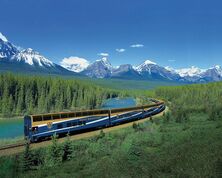
Departures: April – September 2026 & 2027
from £7,249 pp.
Book your holiday today:
Within GB: 01580 214 089 • International: +44 (0)1580 214 089
As you drive this huge country, you'll come across remnants of its railway history everywhere, when steam trains were the only way to connect far-flung places. It's not just about the historical, though. You'll see epic scenery, learn about different cultures, and appreciate the grit of Canada's early pioneers.
In this article, we'll cover some of the main railways in Canada, where to go to see them and where you can find out more about them.
Construction of the transcontinental Canadian Pacific Railway (CPR) commenced in the 1880s - an ambitious initiative with profound consequences for Canada's development as a nation. The monumental scope of this enterprise saw intrepid surveyors chart routes through imposing mountain ranges and across vast prairies, guided by the vision of connecting the Atlantic to the Pacific.
Completing Canada's first coast-to-coast railway infrastructure ushered in a new era, catalysing settlement and cultivated industries across once-remote lands. By bridging the distance between eastern and western populated centres, the CPR served to consolidate a national identity and shared prosperity.
Sorry, this YouTube video cannot be displayed.
The following consent is required:
Tracking & performance, Targeting & advertising.
While the network has continued evolving over subsequent decades, the origins of the Canadian Pacific Railway remain integral to the country's historical identity. More than just a commercial transportation artery, this seminal route transcended division and distance through challenging terrain, forging continental unity.
Start off in your motorhome and head east from Vancouver to follow the original CPR tracks. You'll voyage through awe-inspiring landscapes of mountain peaks, roaring rivers, verdant forests and vast open prairies. Each stop tells part of Canada's wild frontier story, from coastal harbours to historic towns.
Your first significant stop is Craigellachie, the symbolic site of the CPR's 'Last Spike'. This spot marks a pivotal moment in Canadian history, where the East and West were united by rail. As you continue, towns like Revelstoke offer a charming blend of railway heritage and mountain town spirit.
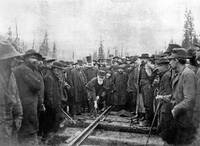
Starting Point: Vancouver, a major hub accessible by air or road, is where your motorhome adventure begins.
Route: Travel eastward along the Trans-Canada Highway, parallel to the historic CPR line, passing through stunning landscapes like the Canadian Rockies.
Key Stops: Craigellachie for historical significance; Revelstoke for cultural and natural exploration.
Culinary Delights: Savour local Canadian cuisine, with regional specialities like poutine and fresh salmon in towns like Revelstoke.
Rest and Cultural Insights: Utilise motorhome-friendly rest stops and immerse yourself in local museums and heritage sites to deepen your understanding of the CPR's impact on Canada.
Leaving Revelstoke, the journey continues east on the Trans-Canada Highway through the formidable Canadian Rockies terrain. This landscape proved pivotal in the original construction of the Canadian Pacific Railway. Engineers faced daunting barriers cutting routes through the Columbia and Kicking Horse river valleys' extreme mountainous terrain.
The final completion of the railway here required remarkable perseverance and innovation in the face of challenges. Linking up such imposing topography opened the way to connecting Eastern and Western Canada with a continuous Transnational railway.
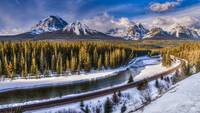
Route Directions: Follow Highway 1, marvelling at the engineering triumphs like the Spiral Tunnels near Yoho National Park.
Natural Beauty: Discover stunning vistas around Lake Louise and Banff National Park, each offering a unique blend of natural beauty and historical richness.
Historical Significance: Reflect on the region's role in facilitating Canada's national unity and economic growth.
Activities and Exploration: Engage in activities like hiking and wildlife watching, taking advantage of the numerous natural attractions along the way.
Venturing east beyond the Canadian Rockies, the next leg along the Canadian Pacific Railway route leads through regions brimming with cultural heritage. As you pass through historic towns like Calgary and Moose Jaw, you'll witness firsthand the railway's catalyst role in their origins and evolution.
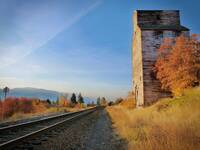
As an outpost catering to 19th-century explorers and traders, Calgary's frontier roots paved the way for the city to become a key rail hub. Today, as you walk the vibrant streets of Stampede City among modern skyscrapers, you can still glimpse artefacts of its rugged past.
Meanwhile, Moose Jaw earned its eccentric name from the Cree word for "warm winds". Long before trains steamed through the prairie, First Nation tribes gathered by the river that lent its handle to this quirky settlement. Meander discovery trails to uncover remnants of tribes, early pioneers, prohibition bootleggers and underground tunnels - all thriving at some point thanks to the connecting railway.
These communities and more each reveal their own distinct character and legacy tied to the CPR's nation-building path. Every stop allows visitors to immerse in local histories, explore cultural landmarks from Indigenous totems to Chinese restaurants, and experience Canada's rich social fabric woven through rail-fostered growth.
Historical Towns and Cities: The route takes you through towns like Calgary and Moose Jaw, where the railway's influence is evident in their development and cultural heritage.
Cultural Diversity: These areas are melting pots of various cultures, reflecting the diverse communities that the railway brought together. Explore museums, cultural festivals, and historic sites that celebrate this diversity.
Urban Exploration: Cities like Calgary offer a contrast to the natural landscapes previously encountered, providing opportunities to enjoy urban amenities, shopping, and dining.
Sorry, this YouTube video cannot be displayed.
The following consent is required:
Tracking & performance, Targeting & advertising.
The iconic Rocky Mountaineer, opened in 1885, is now the only passenger train operating over the original Canadian Pacific Railway. You can experience this magical journey as part of our Passage through the Rockies tour.
Begin your adventure in Banff where you'll hop aboard the Rocky Mountaineer to Kamloops via the Spiral Tunnels, Kicking Horse Canyon, Rogers Pass, and Craigellachie. From here, you'll continue your journey by motorhome, visiting Vancouver, Victoria, Ucluelet, Nanaimo, Whistler, Lillooet, Wells Gray Provincial Park, Jasper, Lake Louise, Kananaskis Country and Calgary.
This quick overview really only gives you a taster of what you can find on a tour like this. Our travel experts can help you develop your own bespoke motorhome itinerary, which can encapsulate the above and much more.
Canada is a phenomenal place for a motorhome holiday, and we can help with additional excursions. Whether you want to go further north or stay in one particular area, our tours are designed to cater to all your requirements.

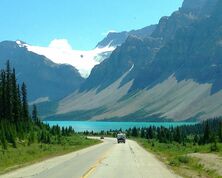
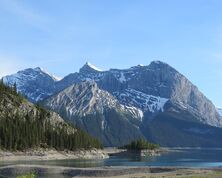
Peter Stannett
Content Writer
Peter is our content writer and SEO specialist, helping keep our content current and monitoring website traffic.
His content covers all four corners of the globe, across topics like activities, advice, food, culture and history.
More by Peter Stannett